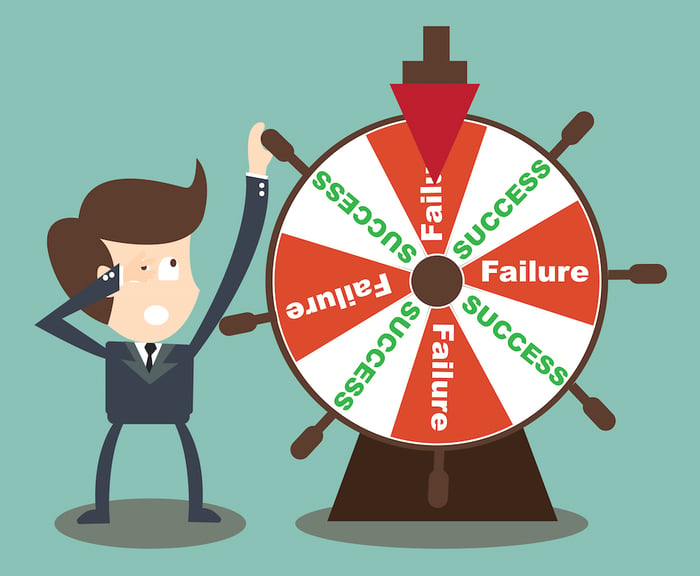
It's the middle of the month and I'm enjoying my early morning caffeination while reviewing the preliminary monthly sales forecasts from the sales team. I see one thing that concerns me. Many of the opportunities forecasted to close again this month at 90% probability are deals that have been previously forecasted to close at similar rates of probability.
These are prospects for which I authorized multiple on-site sales calls, prototyped the "must have or we won't buy" functionality and for whom we hosted full-day visits at our headquarters. The company has expended a lot of time and money in an effort to close these accounts, but we’re not making the progress we should with them.
I pick one of the more egregious examples and call the sales representative to determine what else needs to be done to ensure that the prospect closes this month.
The rep says, "I just spoke with the prospect, and they have decided to continue to do business as usual and push the purchase off for another month." He adds: "They want me to call back in a month as they will likely go forward then."
I tell the sales rep that this opportunity has been lost to “no decision.” “Take it off your forecast until you understand why it is costing the prospect money not to go with our solution!”
Why “No Decision” is the Worst Possible Outcome
The most disconcerting thing is that the CEO and Executive VP seem to think this situation is better than actively losing a deal. “We kill the competition! We only lose when incompetent people can’t make a decision.”
The reality is that a decision to not buy from you is a decision – and the worst possible outcome! It’s the result of a poor sales process or poor execution of the process (and lack of proper management).
If your salesperson doesn't understand why the prospect will buy, sales management is to blame, not that potential customer. Your salesperson doesn't determine what is a real opportunity. A prospect that puts you through this experience has just taken your resources and wasted your time. I would rather lose two of three deals to a competitor than to a “no decision” because if it is lost to the competition, the prospect saw sufficient value in the solution to take action and change how they do business.
For a company to change how it does business, the prospect needs to know what’s in it for them to buy. This reason has to be related to dollars: i.e., reduced cost, avoided cost or increased revenue. If you are asking a company to pay $150,000 for your product/service, the value to them had better be greater than $150,000. Certainly, no one would knowingly spend $150,000 to solve a $50,000 problem!
Salespeople, with the support of strong sales leaders, identify which opportunities are likely to close and which will likely go to the decision-making void. They do this by determining the business issue, the value to the prospect of changing, and the critical level of the need. Or, in the language of business, what the expected return on investment (ROI) is to purchase your proposed solution. These experienced salespeople identify the real opportunities and quickly put the others nicely off the forecast. When a sales team is run like this, it usually does not have a very high percentage of “no decision” outcomes.
Why is ROI Important?
-
ROI demonstrates in dollar figures what your product/service is worth. This is perhaps the most important aspect of ROI, because it turns the subjective into the objective, which transforms "no decision" into a closed sale.
-
ROI helps you build stakeholder support in a complex sales cycle. Tying a dollar value to a product/service determines a “go/no-go” decision. Decision makers want to know the dollar value; without an ROI, that is very difficult.
-
ROI uncovers additional benefits. The process of calculating ROI allows the sales person to uncover benefits that might not be obvious.
-
ROI leads to a higher purchase ranking. Once the decision has been made to purchase a product/service, ROI determines ranking among other priorities; investments with a greater ROI are likely ranked higher and are purchased sooner.
Your prospect is not the only one who is competing for his or her company's limited funding. You need to equip your prospect with the compelling argument for spending funds on your solution. Additionally, there is the tactical advantage a salesperson has in price negotiations when he or she knows exactly how much his prospect will save and what the total return is on the investment.
Salespeople who fail to take the time to diagnose and understand their prospects' business issues, and don't actively participate in helping their prospects calculate the ROI, will most likely lose the sale due to the prospect’s lack of a decision or they'll get outsold by the sales rep who does. Just think about it: What would it be worth to you if your salespeople could reduce their "no decisions" and increase their close ratio by 50% or more?
 Mark Fonfara is Vice President of technology sales at Scope3D. He has a solid track record of successfully driving top-line revenue and value creation in B2B technical markets. Connect with him on LinkedIn.
Mark Fonfara is Vice President of technology sales at Scope3D. He has a solid track record of successfully driving top-line revenue and value creation in B2B technical markets. Connect with him on LinkedIn.








